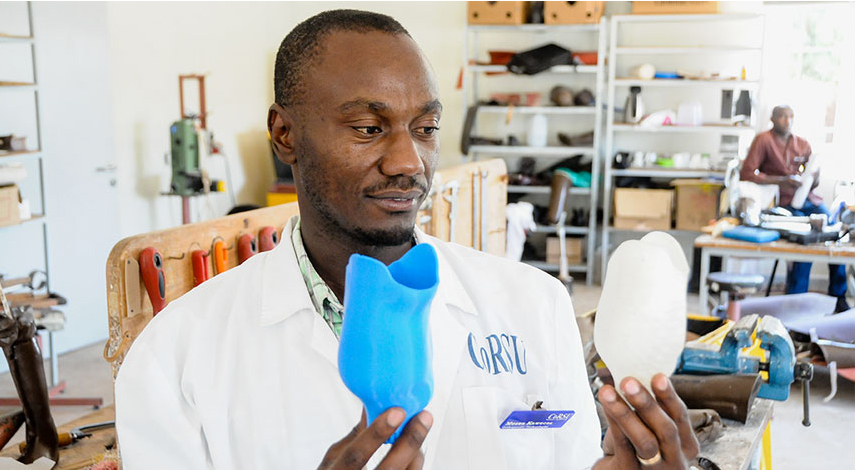3D Printers Help Amputees

Latest News
June 24, 2015
Prostheses can be complex, expensive, and challenging to properly fit even in the best conditions. In the developing world those challenges are amplified. 3D printing, however, has opened up opportunities to create lower-cost prosthetics faster, and to make those artificial limbs using scan data so that they fit more comfortably.
In Uganda, Comprehensive Rehabilitation Services (CoRSU) has teamed up with the University of Toronto and the Christian Blind Mission (cbm Canada) charity to create custom-fitting prostheses. Unlike the plaster cast sockets typically used to fit the limbs to the patient, the plastic printed units can be made in a day and fit more comfortably.
They can be created with just $3 in materials, along with an infrared scanner, laptop and MakerBot 3D printer.
The system in Uganda is part of a larger initiative at cbm Canada called 3D PrintAbility: Leveraging 3D Printing Technology for Prosthetics Production in Developing Countries, targeted at creating lower limb prosthetics during a three-year implementation period.
Uganda faces a number of hurdles when it comes to providing help to amputees. According to an article on Yahoo News, there are just 12 trained prosthetic technicians in the country who are trying to help more than 250,000 children that have lost limbs. The 3D printing solution could help them treat multiple patients at the same time, and the system is portable.
A team of 10 trainers from Canada set up three 3D printers for CoRSU in January and test fitted some of the initial patients with the prosthetic sockets. According to CoRSU’s website:
The project team will experiment with a variety of plastic materials and techniques for printing the wall of the socket for greatest strength and durability with the least weight and material. They will also evaluate the potential use of Canadian custom-made 3D printers that may be better purposed for this application in the developing world. Most importantly, the team will incorporate good development principles by ensuring disability inclusion, gender equity and environmental sustainability within the project’s scope.
You can see more in the video below:
Source: Yahoo News
Subscribe to our FREE magazine, FREE email newsletters or both!
Latest News
About the Author
Brian Albright is the editorial director of Digital Engineering. Contact him at [email protected].
Follow DE





